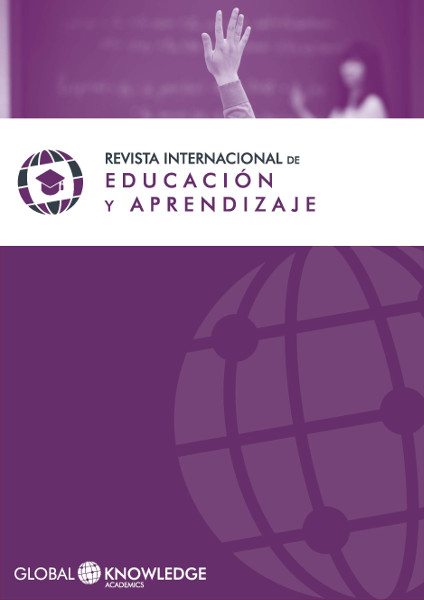Entre empoderamiento individual y persistencia de las desigualdades sociales: un análisis de los efectos de una experiencia escolar activa sobre alumnos y alumnas de una escuela alternativa en Ecuador
DOI:
https://doi.org/10.37467/gka-revedu.v6.1792Palabras clave:
educación alternativa, pedagogía activa, empoderamiento, desigualdades sociales, estereotipos de género.Resumen
La gran mayoría de los trabajos realizados sobre las desigualdades educativas se han centrado sobre el sistema educativo llamado “tradicional”. En este contexto, pocas investigaciones se han realizado sobre los efectos de las experiencias pedagógicas “alternativas”. Este trabajo se propone estudiar el caso de una escuela alternativa en Ecuador, analizando cómo se reproducen o se limitan las desigualdades sociales dentro de esta estructura escolar. Mostraremos así, cómo estas pedagogías pueden reducir la influencia de las categorías sociales normativas, a través de un proceso de subjetivación compartido por sus antiguos/as alumnos/as. Por otro lado, analizaremos cómo una estructura escolar activa, centrada sobre el respeto de los ritmos escolares individuales, permite de igual manera la reproducción de ciertas desigualdades sociales y estereotipos de género.
Descargas
Estadísticas globales ℹ️
|
519
Visualizaciones
|
163
Descargas
|
|
682
Total
|
|
Citas
Bello A. y Rangel M. (2004). La equidad y la exclusión de los pueblos indígenas afrodescendientes en América latina y el Caribe. Revista de la CEPAL, (75). URL: https://www.cepal.org/es/publicaciones/10800-la-equidad-la-exclusion-pueblos-indigenas-afrodescendientes-america-latina
Gianini Belotti E. (1978). A favor de las niñas. Caracas: Monte Ávila.
Bonal X. (1998). Sociología de la educación. Una aproximación crítica a las corrientes contemporáneas. Barcelona : Paidós Ibérica.
Bourdieu P. & Passeron J.C. (1970). La Reproduction. Eléments pour une théorie du système d’enseignement. Paris : Editions de minuit.
Brassat E. (2012). Education, apprentissage et connaissance : la formation des idées pédagogiques (Tesis doctoral en Filosofía). Universidad Paris X Nanterre. Paris.
Cherkaoui M. (2010). Sociologie de l’éducation. Paris : PUF. DOI: https://doi.org/10.3917/puf.cherk.2010.01
Coleman J.S. (ed.) (1965). Education and Political Development. New Jersey: Princeton University Press.
Cueto & Winkler (eds.) (2004). Etnicidad, Raza, Género y Educación en América Latina. PREAL.
Dubet F. (2009). Penser les inégalités scolaires. En : Duru-Bellat M. & Van Zanten A. (dir) Sociologie du système éducatif : Les inégalités scolaires. Paris : PUF.
Dubost M.H. (2010). Modernité, individualisme et crise de l'École. Le Télémaque, (37), 125-136. DOI: https://doi.org/10.3917/tele.037.0125
Durkheim E. (2002 [1893]). La educación moral, Madrid: Ediciones Morata.
Easton D. (1957). The Function of Formal Education in a Political System. The School Review, 26(2), 304-316. DOI: https://doi.org/10.1086/442401
Espinosa B. (2008). Organización. Financiamiento y asignación de recursos en el bachillerato. En: Arcos Cabrera C. & Espinosa B. (coord.), Desafíos para la educación en el Ecuador: calidad y equidad (pp.275-328). Quito: Serie foro FLACSO.
Fernández S. (2006). La escuela activa y la cuestión social en el Ecuador: dos propuestas de reforma educativa, 1930-1940. Revista Procesos, (23), 77-96.
Instituto Nacional de Estadística y Censos. (2010). Censo de población y vivienda. Recuperado de: http://www.ecuadorencifras.gob.ec/base-de-datos-censo-de-poblacion-y-vivienda/
Instituto Nacional de Estadística y Censos. (2012). Matriculación y asistencia a clases. Análisis. Revista
Coyuntural. Recuperado de: http://www.inec.gob.ec/inec/revistas/e-analisis5.pdf.
Jacquet-Francillon F. (2005). Principes et pratiques de « l'éducation nouvelle »: des objets de recherche, Persée, (153), 5-12. URL : https://www.persee.fr/doc/rfp_0556-7807_2005_num_153_1_3389 DOI: https://doi.org/10.3406/rfp.2005.3389
McEwan P. (2004). La brecha de puntajes obtenidos en las pruebas por los niños indígenas en Sudamérica. En: Cueto & Winkler (eds.), Etnicidad, Raza, Género y Educación en América Latina (pp. 283-314). PREAL.
Montessori M. (1986) [1949]. La formación del hombre. México: Editorial Diana.
Montessori M. (1992) [1958]. De la infancia a la adolescencia. Paris : Desclée de Brouwer.
Mosconi N. (2010). Filles/garçons. Éducation à l’égalité ou transmission des stéréotypes sexistes ? L’école et la ville, (4), 1-12.
Orellana-Fernández R. (2017). Les écoles différentes au Chili. Une recherche exploratoire autour des écoles alternatives libres. En : D. Groux et al (dir.), Réformer l’école ? L’apport de l’éducation comparée (pp. 297-306, 3ème partie). Paris : L’Harmattan.
Poiret Christian et al. (2011). Contextualiser pour mieux conceptualiser la racialisation. Revue européenne des migrations internationales, 27 ( 1), 7-16. URL : http://remi.revues.org/5283 DOI: https://doi.org/10.4000/remi.5283
Torres J. (1991). El curriculum oculto, Madrid: Ediciones Morata.
UNESCO. (1991). Proyecto principal de educación en América Latina y el Caribe. (Boletín n.24). Recuperado de: http://www.unesco.org/education/pdf/11_173_s.pdf
UNESCO (1998). La UNESCO y la Educación en América Latina y el Caribe: 1987-1997. Recuperado de: http://unesdoc.unesco.org/images/0011/001128/112847S.pdf
Descargas
Publicado
Cómo citar
Número
Sección
Licencia
Los autores/as que publiquen en esta revista aceptan las siguientes condiciones:
- Los autores/as conservan los derechos de autor.
- Los autores/as ceden a la revista el derecho de la primera publicación. La revista también posee los derechos de edición.
- Todos los contenidos publicados se regulan mediante una Licencia Atribución/Reconocimiento-SinDerivados 4.0 Internacional. Acceda a la versión informativa y texto legal de la licencia. En virtud de ello, se permite a terceros utilizar lo publicado siempre que mencionen la autoría del trabajo y a la primera publicación en esta revista. Si transforma el material, no podrá distribuir el trabajo modificado.
- Los autores/as pueden realizar otros acuerdos contractuales independientes y adicionales para la distribución no exclusiva de la versión del artículo publicado en esta revista (p. ej., incluirlo en un repositorio institucional o publicarlo en un libro) siempre que indiquen claramente que el trabajo se publicó por primera vez en esta revista.
- Se permite y recomienda a los autores/as a publicar su trabajo en Internet (por ejemplo en páginas institucionales o personales), una vez publicado en la revista y citando a la misma ya que puede conducir a intercambios productivos y a una mayor y más rápida difusión del trabajo publicado (vea The Effect of Open Access).













